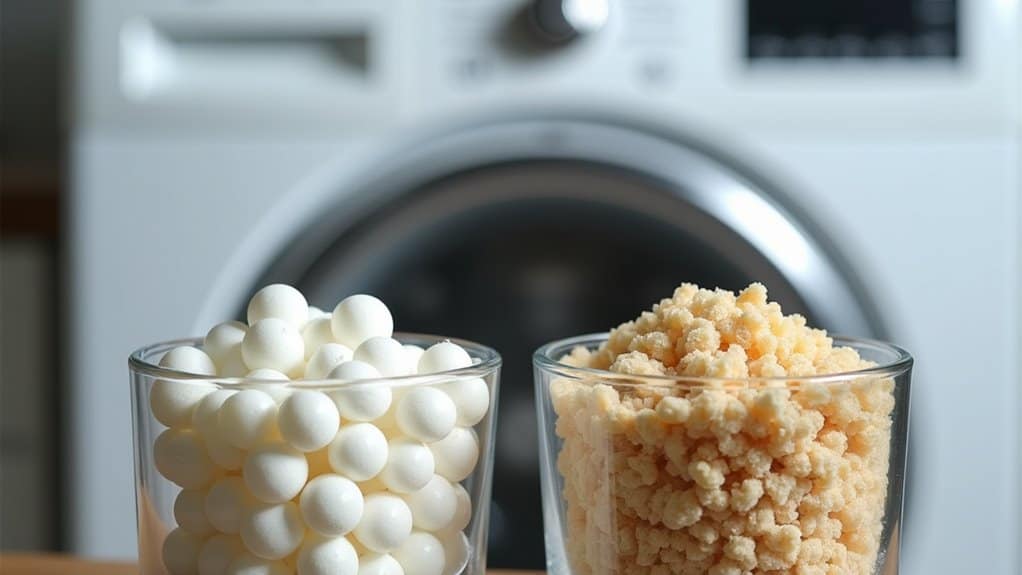Undersizing your water softener’s grain capacity forces excessive regeneration while allowing damaging minerals to infiltrate your plumbing system. We’ve found this common mistake leads to scale buildup that reduces appliance efficiency by up to 30% and drastically shortens their lifespan. Proper sizing requires calculating your specific water hardness (GPG), daily household usage, and adding a 25% buffer for unexpected consumption. The right grain capacity delivers protection that extends far beyond your monthly utility savings.
Key Takeaways
- Undersized softeners cause appliances to work harder with hard water, leading to premature failure and costly replacements.
- Most homeowners underestimate their actual water usage by 30-50%, resulting in insufficient grain capacity.
- Water hardness is frequently miscalculated, causing improper mineral removal that damages heating elements and internal components.
- Using a 30,000-grain softener when you need 45,000+ grains forces excessive regeneration cycles that strain system components.
- Visible signs like white residue on fixtures indicate your softener isn’t removing enough minerals to protect appliances.
Why Most Homeowners Underestimate Their Softener Grain Capacity
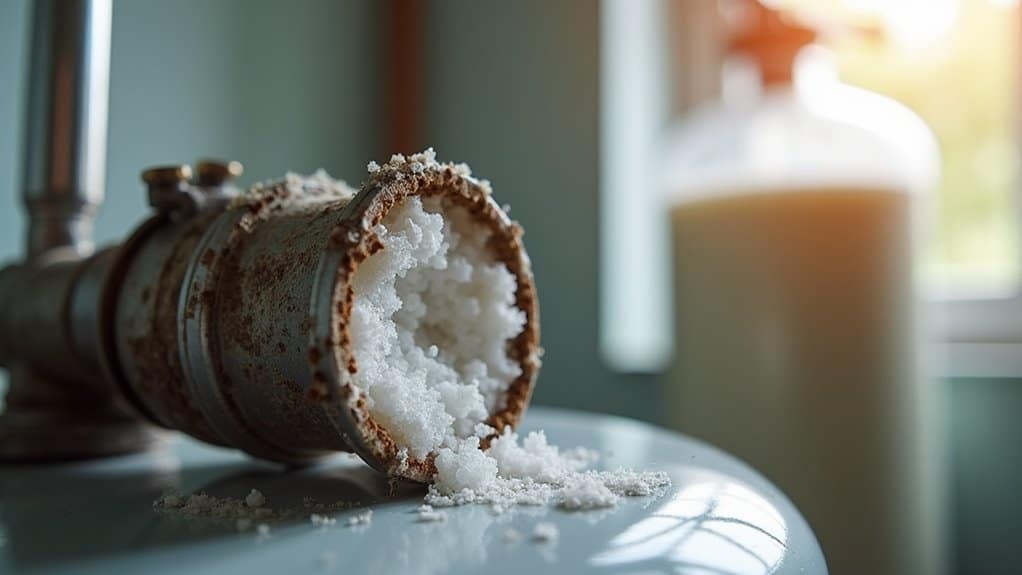
When selecting a water softener system, most homeowners make critical miscalculations regarding their required grain capacity, leading to underperforming units and premature regeneration cycles. We’ve identified five common estimation errors.
First, many households overlook water-intensive activities like gardening and car washing. This oversight can lead to significant cost savings by ensuring that the softener is properly sized for all household needs.
Second, they rely on outdated consumption averages without adjusting for actual usage patterns.
Third, they fail to account for future needs such as additional appliances or family members.
Fourth, seasonal variations—particularly summer irrigation—remain uncalculated.
Finally, water-efficient appliances create a false sense of reduced demand, when total household consumption often remains substantial. These underestimations result in excessive salt consumption and accelerated wear on system components, shortening the lifespan of your investment.
The Hidden Costs of an Undersized Water Treatment System
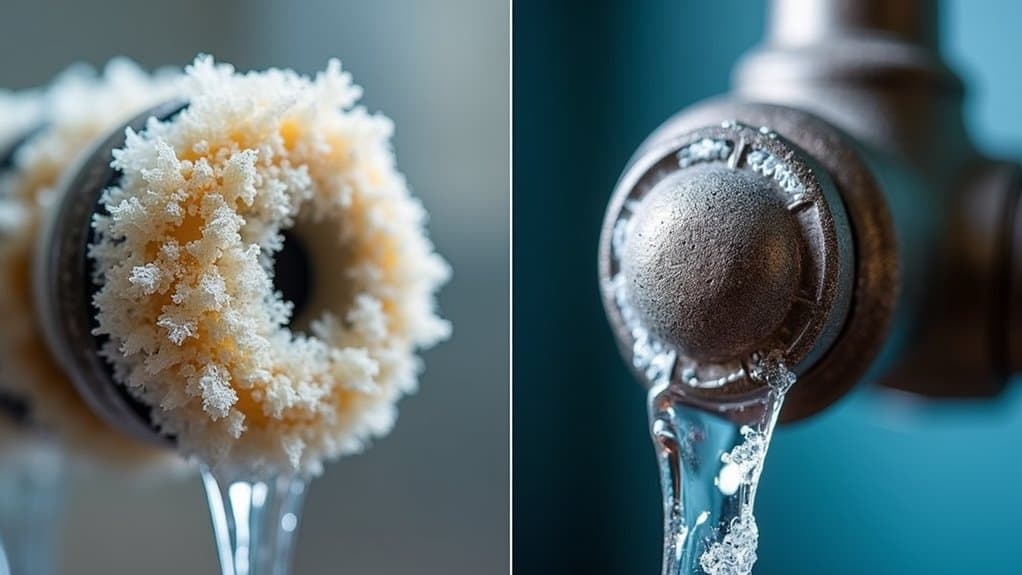
The financial impact of an undersized water softener extends far beyond the initial purchase price. When your system can’t keep pace with your household’s demands, the consequences compound rapidly across your home’s infrastructure. An undersized water softener struggles to meet the demand during peak water usage, leading to hard water breakthrough at critical times. This frequently results in costly mistakes that can be avoided with proper sizing.
| Impact Area | Immediate Costs | Long-Term Damage |
|---|---|---|
| Appliances | 10× more detergent required | Premature replacement |
| Plumbing | Reduced water pressure | Accelerated pipe corrosion |
| Energy | Higher utility bills | HVAC system strain |
| Maintenance | Extra cleaning supplies | Professional interventions |
| Property | Visible staining | Decreased home value |
We consistently observe that properly sized systems prevent these cascading financial burdens while undersized units create an expensive cycle of inefficiency and deterioration.
How to Calculate the Correct Grain Size for Your Household
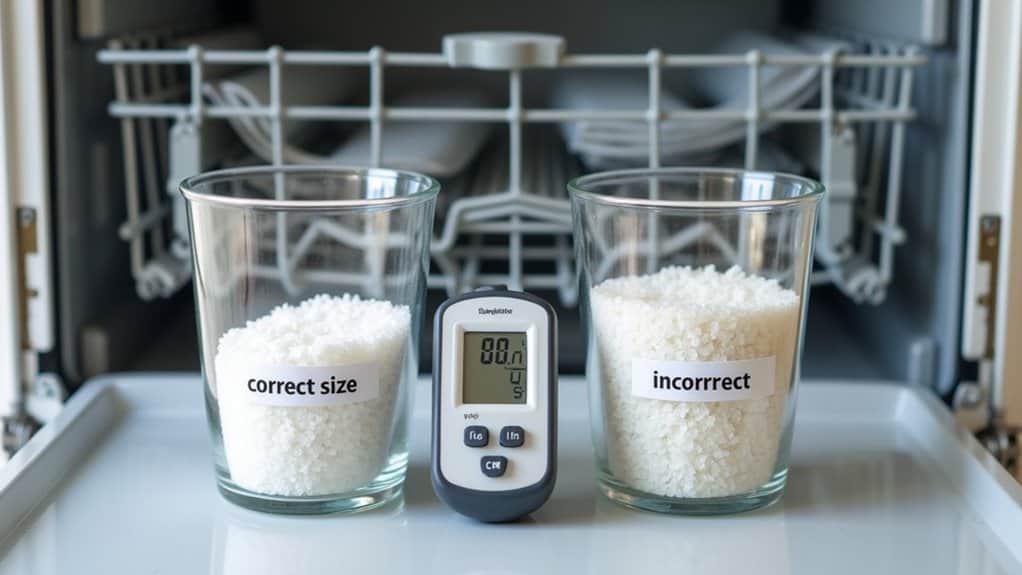
Calculating the correct grain size for your water softener requires precision and an understanding of several key variables that affect performance. Many homeowners overlook the importance of accurate water testing, which can lead to improper sizing.
We recommend a two-step approach:
First, determine your water hardness in GPG (either through testing or by converting ppm by dividing by 17.1). Don’t forget to add 5 grains for each 1 ppm of iron present.
Next, multiply your daily household water usage (50-80 gallons per person) by your total number of residents and your water hardness level.
For example: 3 people × 75 gallons × 12 GPG = 2,700 grain requirement daily.
Always add 25% capacity for unexpected usage spikes. Consider that an efficient softener should provide approximately 20,000 grains when using just 6 pounds of salt.
Signs Your Current Water Softener Isn’t Up to the Task
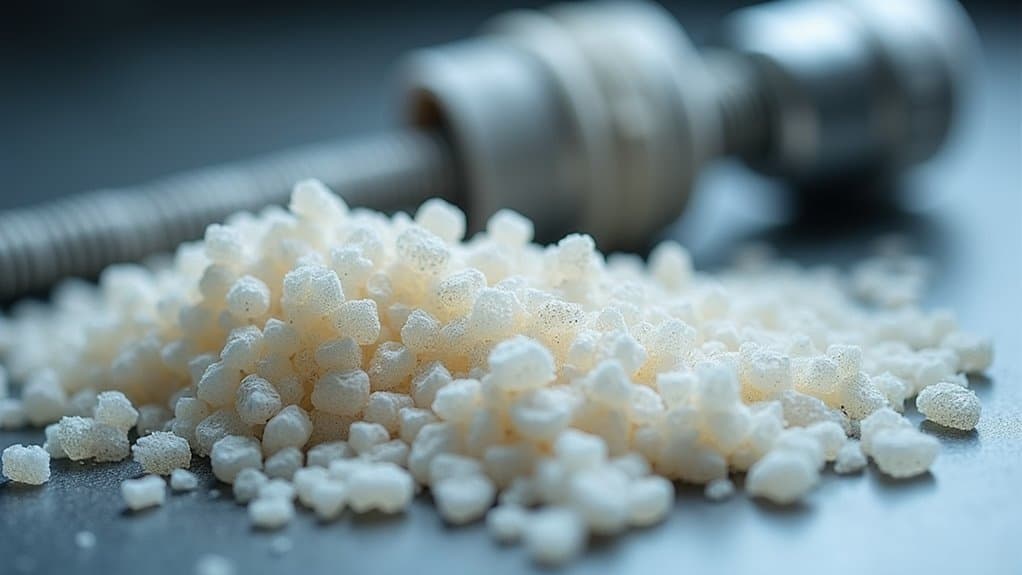
Recognizing when your water softener is failing can save you from costly plumbing repairs and ongoing water quality issues. We’ve identified several telltale indicators that your system needs attention.
| Warning Sign | Likely Cause | Action Required |
|---|---|---|
| White spots on glassware | Incomplete softening | Check salt levels, regeneration cycle |
| Excessive salt consumption | Faulty timer or settings | Reset controls, inspect valve assembly |
| Discolored water | Resin bed contamination | Clean or replace resin, disinfect tank |
Watch for inconsistent brine tank water levels and frequent regeneration cycles. Systems older than 10-15 years typically experience age-related decline, reduced ion-exchange capacity, and require more maintenance than replacement justifies. If you notice itchy skin after showering, your water softener might not be properly removing minerals that prevent soap from rinsing off completely, which could be due to misjudging water hardness.
Frequently Asked Questions
Can Water Softeners Damage Plumbing or Cause Pipe Corrosion?
Yes, we’ve found water softeners can damage plumbing by accelerating corrosion in copper, brass, and galvanized pipes when sodium replaces calcium, potentially leading to leaks and metal contamination.
How Does Water Temperature Affect Softener Performance?
We’ve found water temperature significantly impacts softener performance. Cold temperatures slow ion exchange rates, reducing effectiveness, while warm water enhances weak-acid cation resin efficiency. Strongly basic resins remain relatively unaffected by temperature fluctuations.
Do Softeners Remove Beneficial Minerals From Drinking Water?
Yes, water softeners remove calcium and magnesium, but these aren’t significant nutrient sources in water. We get over 99% of our beneficial minerals from food, not drinking water.
Can Softeners Handle Well Water With Iron Contamination?
We can confirm that softeners handle low ferrous iron levels (1-3 ppm) through ion exchange, but struggle with higher concentrations or oxidized iron, causing resin fouling and reduced effectiveness over time.
Should Vacation Homes Use Different Softener Sizing Calculations?
Yes, we recommend vacation homes use peak occupancy-based softener sizing calculations. We’ll multiply maximum guests by 75 gallons and account for concentrated usage patterns to prevent regeneration timing issues.
Conclusion
We’ve demonstrated how proper grain capacity sizing forms the critical foundation of effective water treatment systems. By calculating your household’s actual hardness requirements rather than accepting standard recommendations, you’ll extend appliance lifespans and optimize regeneration cycles. Don’t wait for scale buildup or premature equipment failure to signal a problem. Implement our sizing methodology now to ensure your investment delivers the water quality and system longevity you expect.

Craig “The Water Guy” Phillips is the founder of Quality Water Treatment (QWT) and creator of SoftPro Water Systems.
With over 30 years of experience, Craig has transformed the water treatment industry through his commitment to honest solutions, innovative technology, and customer education.
Known for rejecting high-pressure sales tactics in favor of a consultative approach, Craig leads a family-owned business that serves thousands of households nationwide.
Craig continues to drive innovation in water treatment while maintaining his mission of “transforming water for the betterment of humanity” through transparent pricing, comprehensive customer support, and genuine expertise.
When not developing new water treatment solutions, Craig creates educational content to help homeowners make informed decisions about their water quality.


